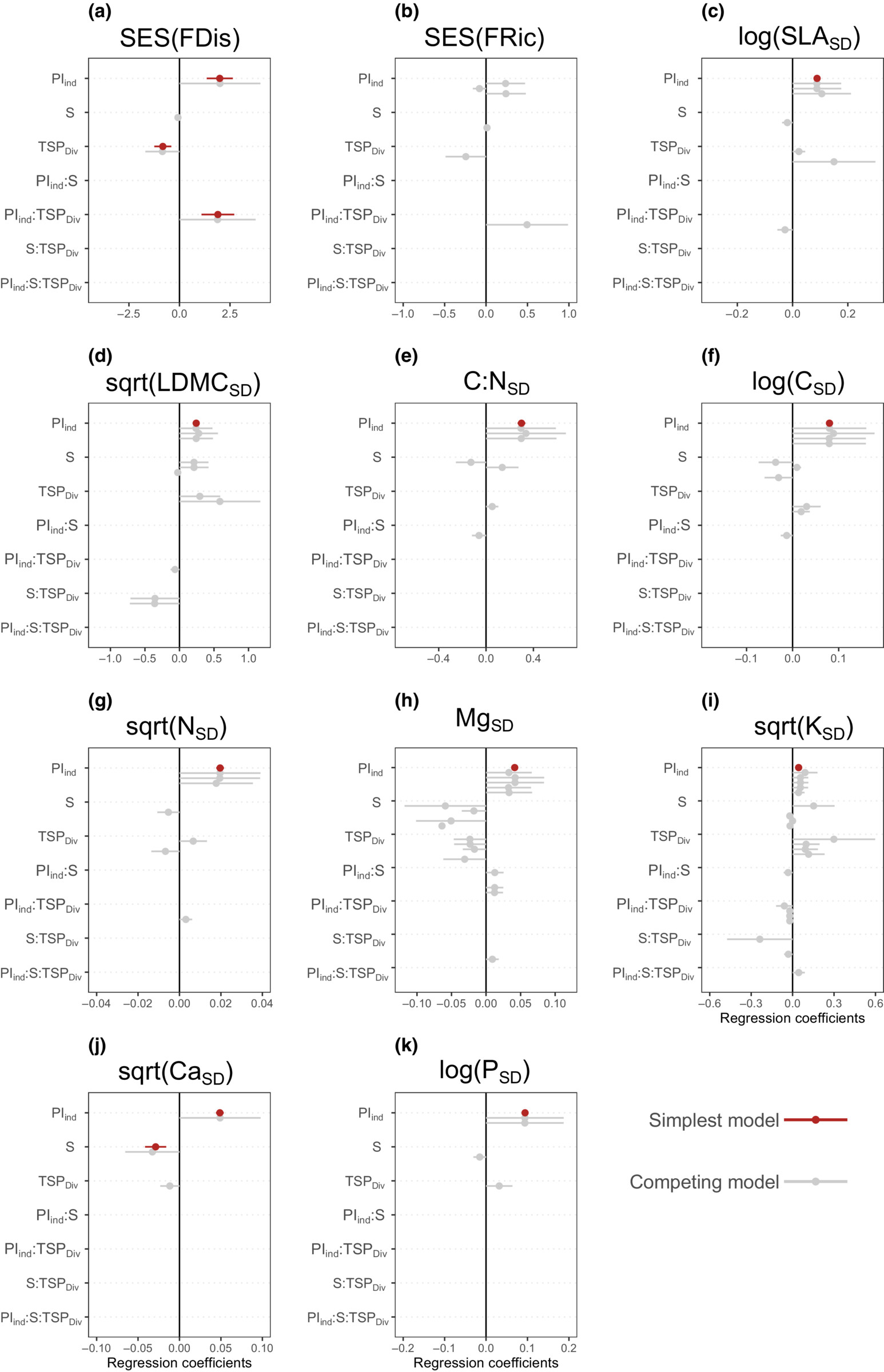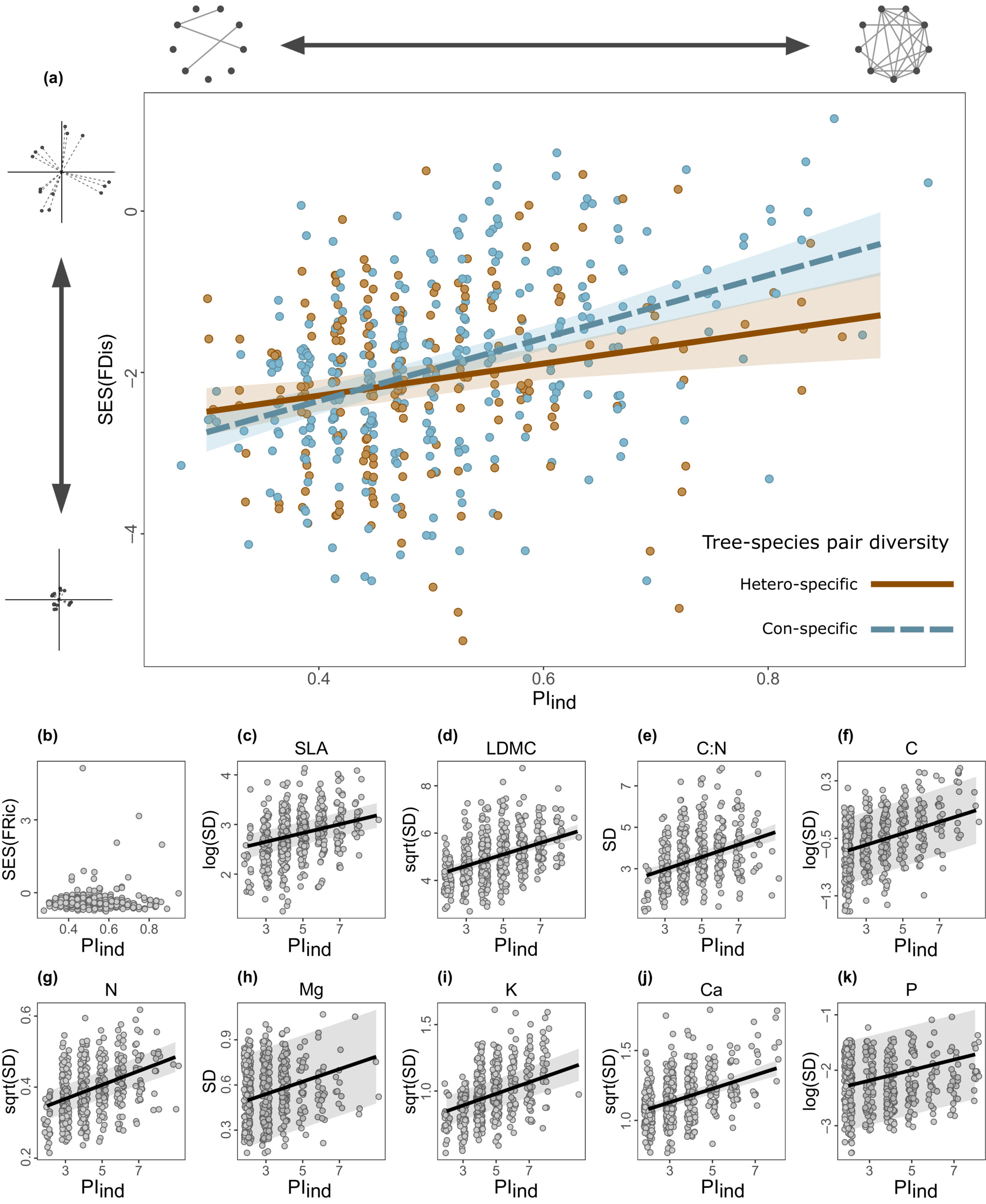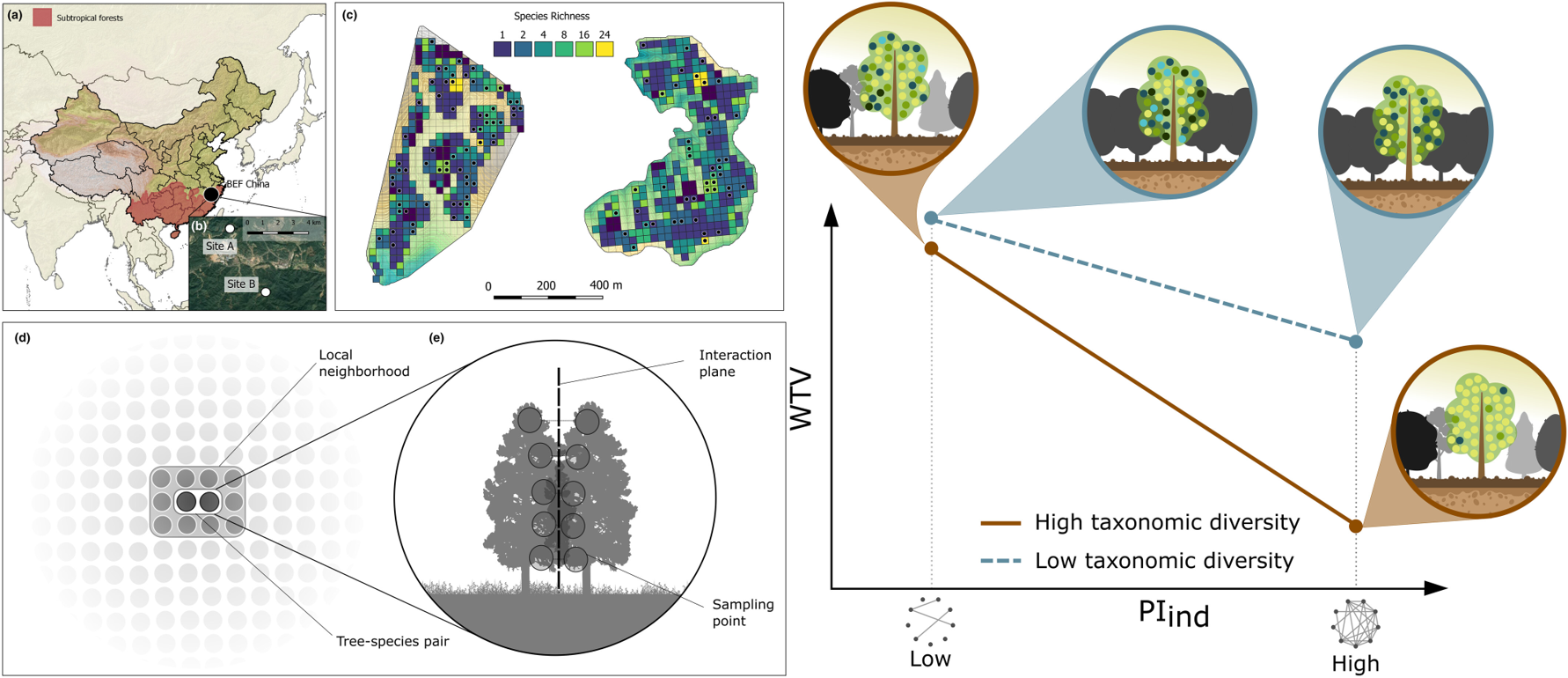Covariation of plant functional traits, that is, phenotypic integration, might constrain their variability. This was observed for inter- and intraspecific variation, but there is no evidence of a relationship between phenotypic integration and the functional variation within single plants (within-individual trait variation; WTV), which could be key to understand the extent of WTV in contexts like plant–plant interactions.
We studied the relationship between WTV and phenotypic integration in c. 500 trees of 21 species in planted forest patches varying in species richness in subtropical China. Using visible and near-infrared spectroscopy (Vis-NIRS), we measured nine leaf morphological and chemical traits. For each tree, we assessed metrics of single and multitrait variation to assess WTV, and we used plant trait network properties based on trait correlations to quantify phenotypic integration.
Against expectations, strong phenotypic integration within a tree led to greater variation across leaves. Not only this was true for single traits, but also the dispersion in a tree’s multitrait hypervolume was positively associated with tree’s phenotypic integration. Surprisingly, we only detected weak influence of the surrounding tree-species diversity on these relationships.
Our study suggests that integrated phenotypes allow the variability of leaf phenotypes within the organism and supports that phenotypic integration prevents maladaptive variation.

Fig. 1 Effects of the predictors in the simplest (red) and competing models (gray; ∆AICc < 2) for (a) the standarized effect size of functional dispersion (SES(FDis)) and (b) functional richness (SES(FRic)), and the standard deviation (SD) of (c) specific leaf area (SLA), (d) leaf dry matter content (LDMC), (e) carbon-to-nitrogen content (C : N), (f) leaf carbon content (c), (g) leaf nitrogen content (n), (h) leaf magnesium content (Mg), (i) leaf potassium content (K), (j) leaf calcium content (Ca), and (k) leaf phosphorous content (P), with 95% confidence intervals.

Fig. 2 Effects of PIind obtained in the simplest model according to the parsimony principle for (a) standardized effect size of functional dispersion (SES(FDis)), (b) standardized effect size of functional richness (SES(FRic)), (c) log-transformed standard deviation (SD) of specific leaf area (log(SLASD)), (d) square-root-transformed SD of leaf dry matter content (sqrt(LDMCSD)), (e) SD of carbon-to-nitrogen ratio ((C : N)SD), (f) log-transformed SD of carbon leaf content (log(CSD)), (g) square-root-transformed SD of leaf nitrogen content (sqrt(NSD)), (h) SD of leaf magnesium content (MgSD), (i) square-root-transformed SD of leaf potassium content (sqrt(KSD)), (j) square-root-transformed SD of leaf calcium content (sqrt(CaSD)), and (k) log-transformed SD of leaf phosphorous content (log(PSD)).

Fig. 3 Relationship between within-individual variation of leaf calcium (square-root transformed standard deviation (SD)) and Shannon diversity of the local neighborhood.

Fig. 4 Conceptual representation of the occupancy of the functional trait space under scenarios of (a) low and (b) high individual phenotypic integration (PIind).
Literature:
Pablo Castro Sanchez-Bermejo*, Andr´ea Davrinche, Silvia Matesanz, W. Stanley Harpole, Sylvia Haider. 2023. Within-individual leaf trait variation increases with phenotypic integration in a subtropical tree diversity experiment. New Phytologist. 240(4): 1390-1404. https://doi.org/10.1111/nph.19250.

